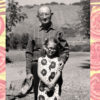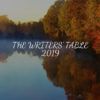We talk to Simone Martel – author of the short story “Urban Terroir” in issue forty-five of Neon – about growing food, playing games and writing across a variety of forms.
February 6, 2018
Your story takes place on an urban smallholding, and you mention in your biography that you spent some time working on a farm. Setting aside the more supernatural elements of the story for a moment, how did this experience contribute to the genesis of “Urban Terroir”?
As any farmer or gardener knows, growth inevitably leads to death and decay. Compost happens. Nothing really ever goes away. There’s a certain beauty in that. But not if it’s pollution that’s sticking around. In California’s Central Valley (near the city of Stockton), where my farm was located, the pollution from agribusiness is so pervasive that I began to doubt my ability to grow anything sustainably or organically. The pollution is in the water, in the soil, in the air. There came a point where I simply saw it everywhere. A neighbor had developed a brain tumor from drinking the well water. Some of your British readers might recall the horror of mad cow disease. I felt surrounded by that sort of taint, of corruption spreading within the soil, the plants and animals. And then, of course, in my story it’s within the unnamed protagonist himself. Seeing this corruption, this rot and decay all around him, he must finally acknowledge it within himself too. He fears what we all fear, the quiet horror of death itself lurking within us. We carry death with us, just by living.
I enjoyed the sense of a budding nightmare that grows stronger and stronger as the story develops. It felt a little like a pre-cursor to a post-apocalyptic story, or perhaps even a strange animal-centric zombie tale. Do you enjoy this kind of fiction?
I’m not sure where the idea came from, but I have to admit something about zombie squirrels appeals to me. I suppose zombie fiction is about a literal confrontation with death, and the popularity of post-apocalyptic or dystopian narratives shows a preoccupation with the social order falling apart. I generally prefer realistic fiction, but speculative fiction can reveal emotional truths effectively. I’m a fan of Margaret Atwood’s work, and also of Gabriel Garcia Marquez’s. I love that the characters in One Hundred Years of Solitude are not themselves aware of the oddness or impossibility of what’s occurring. It’s a way to make metaphors come to life – the difference between saying something is like something and saying something is something.
“Urban Terroir” involves a fear of transformation, also a big part of speculative fiction. These stories of alienation and otherness can explore the fear of being an outsider, a freak, a monster. Think of Frankenstein. What is Mary Shelley saying? I think it’s interesting that a woman created the monster, to have written that when she did, as a woman living in a time that did not respect females as wholly human, equal beings. My novel, A Cat Came Back, published last year, is about a young woman whose near death experience traps her in the body of a cat. At one point she asks herself, “Did I leave my body so easily because I never belonged there, because I never felt at home in that human, female form?” Speculative or horror fiction allows us to explore our deepest fears. Being seen as not quite a human being is one fear, feeling alienated from yourself is another. Both are pretty terrifying, I think.
You write in a variety of different forms. Do you find yourself in a different headspace with, for example, memoir and non-fiction than with short stories and novels? Do you have a different approach to different forms?
Writing non-fiction taught me a respect for “particularity.” In my memoir, The Expectant Gardener, I tried to accurately and vividly represent the technical nitty gritty of plants and landscaping. I learned a lot about writing description, and that helped me with fiction, too. In “Urban Terroir” the descriptions of planting seeds and growing seedlings are based on fact, though it all quickly starts going wrong.
At the same time, memoir is always made up to an extent, the dialogue especially. When I wrote the book I tried to distance myself from the material by thinking of myself as a character named Simone; someone who is not only more consistent than I am, but probably more consistent than a character would be in a work of fiction… if that makes sense. Fiction’s more complex. When I’m writing fiction I get excited when I find myself making unexpected leaps and connections. I probably use language more adventurously, too. Sticking to facts constrains a writer from getting at what the story’s really about, below the surface.
The narrator has some pretty dark moments, and there’re hints that he’s exercising his more violent tendencies through video games. What are your thoughts about video games, and particularly violence in video games? Cathartic, dehumanizing, or something else?
Not cathartic! From what I’ve observed, the urge for violence isn’t satiated or spent by game playing. The player always wants more. I played a variety of video games with my son when he was younger, as a way to stay connected to him—from Super Smash Brothers to World of Warcraft. At worst they were a waste of time. Some were educational, and a few were gorgeous, aesthetically. First person shooters bother me, though. In “Urban Terroir,” gaming is a way of capturing the character’s loss of himself. It’s more than a diversion, more than an evasion, actually a vehicle for his transformation from a person into a sort of non-being. He loses the thread of his own story, his reason for being. So, dehumanizing? Perhaps. I think sometimes game players are trying to step out of themselves. But how can disconnecting from their own humanity help them cope with their unhappiness? The killer at Sandy Hook never found a way to step back. That’s a scary thought. These angry young men out there, slipping away, transforming themselves into monsters in our midst.
Can you tell us a bit about what you’re working on now and where readers can find out more about your work?
My website is simonemartel.me. I’m working on a novel about that farm near Stockton. A memoir would be more straightforward and easier to write, but I want to look at the whole community, not just the idealistic, solitary and somewhat self-absorbed young farmer. There’s a hippie commune, petering out. Wealthy realtors grabbing land. The farmworkers and down-and-outs living on the margins of big, polluted commercial farms. For a while, when I was focused on writing short stories, I was able to experiment with point of view. So, in this novel, I want to take many different points of view, even a pit bull’s. A Cat Came Back is short, intense and internal. I’m excited to be working now on something bigger and messier.
*
Simone Martel is the author of a novel (A Cat Came Back), a memoir (The Expectant Gardener), and a story collection (Exile’s Garden). After studying English at UC Berkeley, Simone operated an organic tomato farm near Stockton, California. She’s working on a new novel based on that experience.



